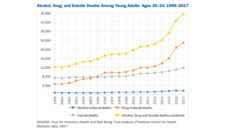The “sandwich generation” has long been a nickname for the mostly middle-aged group of Americans who care for both older and younger family members at the same time. Their older parents need care, their kids are under 18, and they probably have a job, too. There are at least 2.5 million sandwich generation caregivers across the country. “Support of the sandwich generation” has been an explicit goal of the Biden Administration’s Build Back Better infrastructure proposal.
A recent survey conducted by the U.S. Centers for Disease Control and Prevention highlights the potential toll of this dual-caregiving role. During the COVID-19 pandemic, 51.5% of sandwich generation caregivers reported thinking about suicide in the past month. By comparison, suicide ideation was reported by 10.1% of caregivers without a minor child and 4.5% of respondents who were neither parents nor caregivers.
In a collaborative study between the University of Michigan and Wayne State University, my colleagues and I investigated who these sandwich caregivers are and which older adults rely on them. In this first nationally representative analysis, we used data from the 2015 National Health and Aging Trends Study (NHATS) linked with the National Study of Caregiving (NSOC) to compare individual and caregiving experiences between sandwich and non-sandwich generation caregivers.
In all, nearly one-quarter of adults who provided care for at least one parent age 65 years or older also cared for at least one child under 18. Compared to their peers who only provided care for older parents, sandwich generation caregivers were twice as likely to report substantial financial difficulty (24% vs. 12%) and were more likely to report substantial emotional difficulty (44% vs. 32%). They also had a higher average score on a measure of overload (i.e., feelings of exhaustion and fatigue related to caregiving) than those with only older adult caregiving duties.
In addition to taking care of parents and kids, sandwich generation caregivers are more likely than other caregivers to work for pay (69% vs. 54%). Yet they and their parents are more likely to have Medicaid coverage (21% vs. 11% for caregivers, and 30% vs. 21% for their parents). In other words, sandwich generation caregivers and their parents tend to be more likely to have low incomes.
Their combination of roles—raising children, helping their older parents, and working for pay—make sandwich generation caregivers a unique group for policymakers to pay attention to. The relatively high proportion of employed sandwich generation caregivers may benefit from specific employment-related supports, such as paid time off for caregiving responsibilities.
Since many sandwich generation caregivers might work in low-pay jobs with minimal or no benefits, expanding paid time off for caregiving responsibilities might be particularly beneficial. They may also benefit from the paid family caregiver Medicaid policies. For example, through the Medicaid Cash and Counseling Program, participants can pay others to assist them, including adult children, siblings, spouses, other relatives, and even friends. These paid caregiving policies might have a greater impact if expanded to include more states and improved in both scope and coverage. For example, more states should cover spouses and expand eligibility criteria to include more participants and caregivers.
Photo via Getty Images














